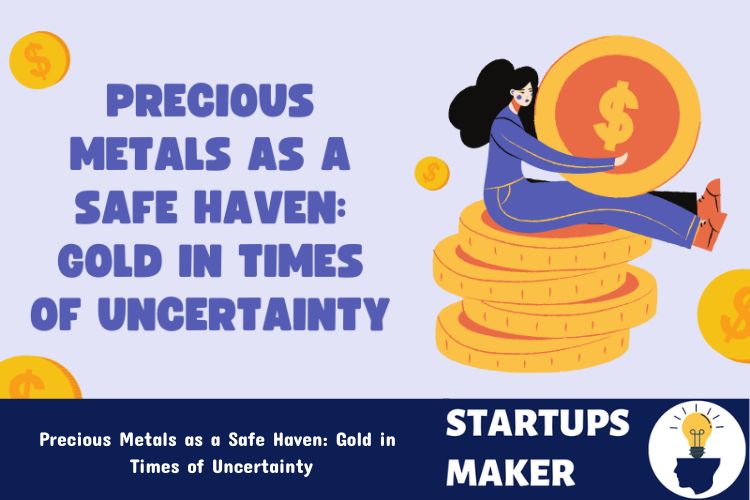When the economy feels shaky, investors look for trusted ways to keep their money safe. Gold has been considered a haven asset for centuries — and 2024–2025 only confirmed this. Its price exceeded $3,050 per ounce in April 2025, reaching an all-time high. The XAU/USD live chart shows how gold has responded to geopolitical crises, inflation expectations, and falling stock indices.
Why Gold?
Gold has unique characteristics: it is physically limited, not tied to currencies, and has high liquidity. These properties make it attractive at times when other assets are losing value. For example, in 2024, when the Nasdaq index lost about 11% in three months, gold rose by almost 14%.
Central banks have also shown their interest in gold. According to the World Gold Council, they bought more than 1,000 tonnes in 2024, a record for the third year. During the fourth quarter, when Trump won the US election, markets became volatile, and purchases increased by 54% year-on-year.
Inflation and the Rate Against Gold
Rising consumer prices are undermining the real returns of traditional assets. In 2022–2024, many countries faced 5–8% inflation, forcing investors to seek protection from currency depreciation. Although high interest rates traditionally curb demand for gold (it does not generate coupon income), interest in the metal remains in the context of structural inflation.
In particular, from March 2020 to early 2025, gold rose by about 114%, while the US Treasury Index fell by more than 40%. That proves that gold can act as an effective hedge even in a higher interest rate environment.
Geopolitics and the Flight to Gold
Gold also reacts to political instability. Military conflicts, trade wars, sanctions, and instability of power force investors to look for reliable instruments. Examples:
- In February 2022, after the war in Ukraine began, gold jumped to $2,069 per ounce.
- In October 2023, following the escalation of the conflict in the Middle East, the metal rose in price by almost 9% in three weeks.
- In early 2025, as the US imposed tariffs on China, gold set a new record as the dollar fell.
This behavior reflects the so-called “geopolitical premium” – a price premium for systemic risk.
Comparison with Other Precious Metals
While gold is the ultimate haven asset, other metals also perform well during crises:
- Silver often follows gold, rising 21% in 2024 but remaining more volatile due to its high industrial dependence.
- Platinum and palladium also rise in price during unstable times, but their dynamics depend on demand in the automotive and industrial sectors.
Thus, gold wins over its competitors in terms of versatility and stability of market perception as a protective instrument.
Gold and Stock Market Crashes
During stock market sell-offs, gold often shows the opposite dynamic. During the banking crisis in the US and Europe in the spring of 2023, gold rose to $2,000 amid falling stocks and bonds.
Financial analysts note that even a pathetic share of gold — 5-10% — in a portfolio increases its stability. According to JPMorgan, portfolios with gold showed a 30% smaller drawdown during the market crises of 2022 and 2023.
The Role of XAU/USD and the Behavior of the Dollar
Since the dollar denominates gold, changes in the USD rate directly drive its price dynamics. A weaker dollar makes gold more accessible to holders of other currencies and stimulates demand. At the beginning of 2025, the dollar index fell after the Fed’s statements about a possible rate cut, which became one of the drivers of the growth of XAU/USD quotes.
The live chart of this pair has become an important indicator: traders and investors follow it to react to macroeconomic signals worldwide. The volatility of this pair has increased in the first half of 2025, as the currency market takes into account both monetary policy and geopolitical risks.
Prospects and Caution
Despite the strong momentum, gold is not immune to a short-term correction. Potential Fed’s tightening, a stronger dollar, or a reduction in geopolitical tensions could lead to a pullback. However, the fundamental factors — record demand from central banks, inflation expectations, and high levels of global debt — remain.
Goldman Sachs and UBS raised their gold price forecast to $3,100–$3,200 per ounce in April 2025, provided that current macroeconomic trends continue.
Conclusion
Gold remains one of the most reliable instruments for protecting capital. Against the backdrop of inflation, falling markets, political turbulence, and depreciating currencies, this metal has proven its value time and again. Combined with the transparent dynamics of XAU/USD and growing demand, gold in 2025 stands as a key asset in the portfolios of investors seeking to preserve capital in uncertain times.
